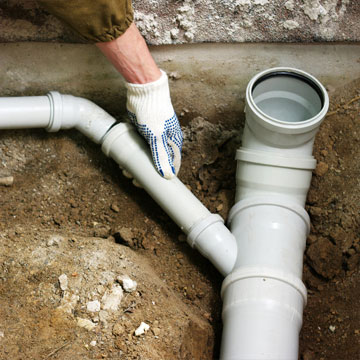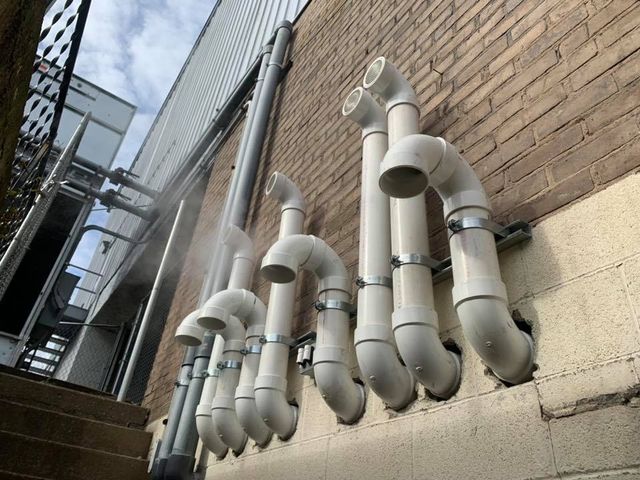The Core Elements of Your House's Plumbing System
The Core Elements of Your House's Plumbing System
Blog Article
What're your beliefs about The Inner Workings of Your Home's Plumbing?

Recognizing just how your home's pipes system works is important for each house owner. From supplying tidy water for alcohol consumption, food preparation, and bathing to safely removing wastewater, a well-kept plumbing system is important for your family's health and wellness and comfort. In this detailed overview, we'll check out the complex network that composes your home's pipes and deal ideas on upkeep, upgrades, and taking care of usual concerns.
Intro
Your home's pipes system is greater than simply a network of pipelines; it's a complicated system that guarantees you have accessibility to clean water and effective wastewater removal. Knowing its parts and just how they interact can aid you protect against pricey repair services and guarantee every little thing runs efficiently.
Standard Parts of a Plumbing System
Pipes and Tubing
At the heart of your pipes system are the pipelines and tubing that carry water throughout your home. These can be constructed from numerous materials such as copper, PVC, or PEX, each with its advantages in terms of durability and cost-effectiveness.
Components: Sinks, Toilets, Showers, and so on.
Fixtures like sinks, toilets, showers, and bathtubs are where water is made use of in your house. Comprehending exactly how these components link to the plumbing system helps in detecting troubles and preparing upgrades.
Valves and Shut-off Points
Shutoffs manage the flow of water in your pipes system. Shut-off valves are essential during emergency situations or when you require to make repair work, allowing you to isolate parts of the system without disrupting water circulation to the whole house.
Water Supply System
Main Water Line
The main water line attaches your home to the community water or a personal well. It's where water enters your home and is dispersed to different fixtures.
Water Meter and Stress Regulator
The water meter measures your water use, while a pressure regulatory authority makes sure that water flows at a secure pressure throughout your home's plumbing system, protecting against damage to pipes and components.
Cold Water vs. Hot Water Lines
Recognizing the distinction in between cold water lines, which supply water straight from the primary, and hot water lines, which bring heated water from the hot water heater, helps in repairing and planning for upgrades.
Water drainage System
Drain Piping and Traps
Drain pipes lug wastewater away from sinks, showers, and commodes to the drain or septic tank. Traps protect against drain gases from entering your home and additionally trap particles that could create clogs.
Air flow Pipes
Air flow pipelines permit air into the water drainage system, avoiding suction that can slow drain and create traps to vacant. Proper air flow is essential for preserving the honesty of your plumbing system.
Value of Proper Drain
Making certain proper drain protects against backups and water damages. Regularly cleaning up drains pipes and maintaining traps can stop pricey repair work and prolong the life of your pipes system.
Water Heating System
Types of Water Heaters
Hot water heater can be tankless or typical tank-style. Tankless heating systems heat water on demand, while storage tanks save heated water for instant usage.
Just How Water Heaters Attach to the Plumbing System
Comprehending exactly how hot water heater connect to both the cold water supply and hot water distribution lines assists in identifying problems like not enough warm water or leaks.
Maintenance Tips for Water Heaters
Frequently flushing your water heater to eliminate debris, examining the temperature level settings, and inspecting for leaks can prolong its life expectancy and boost power performance.
Common Plumbing Issues
Leaks and Their Causes
Leaks can occur because of aging pipes, loosened installations, or high water stress. Attending to leaks quickly stops water damage and mold growth.
Clogs and Blockages
Clogs in drains and toilets are typically triggered by flushing non-flushable products or an accumulation of grease and hair. Using drain screens and being mindful of what goes down your drains pipes can stop blockages.
Indications of Plumbing Problems to Watch For
Low water stress, slow-moving drains pipes, foul odors, or abnormally high water expenses are indications of prospective plumbing problems that should be addressed without delay.
Plumbing Maintenance Tips
Regular Examinations and Checks
Set up yearly plumbing evaluations to catch concerns early. Seek indicators of leaks, corrosion, or mineral buildup in taps and showerheads.
Do It Yourself Maintenance Tasks
Easy tasks like cleansing tap aerators, checking for toilet leakages utilizing dye tablets, or shielding revealed pipes in cold environments can stop major plumbing concerns.
When to Call an Expert Plumbing
Know when a plumbing concern needs professional expertise. Attempting complex fixings without appropriate knowledge can bring about even more damages and greater repair prices.
Upgrading Your Plumbing System
Factors for Upgrading
Updating to water-efficient fixtures or replacing old pipelines can improve water top quality, minimize water bills, and raise the value of your home.
Modern Pipes Technologies and Their Benefits
Discover innovations like clever leak detectors, water-saving commodes, and energy-efficient hot water heater that can save cash and reduce ecological effect.
Price Factors To Consider and ROI
Calculate the in advance costs versus long-lasting savings when taking into consideration pipes upgrades. Numerous upgrades spend for themselves with lowered utility costs and fewer fixings.
Environmental Influence and Conservation
Water-Saving Components and Home Appliances
Setting up low-flow faucets, showerheads, and bathrooms can significantly decrease water use without giving up efficiency.
Tips for Reducing Water Usage
Basic behaviors like fixing leaks quickly, taking much shorter showers, and running complete lots of laundry and dishes can conserve water and lower your energy costs.
Eco-Friendly Pipes Options
Take into consideration lasting plumbing materials like bamboo for floor covering, which is durable and eco-friendly, or recycled glass for countertops.
Emergency Preparedness
Steps to Take During a Pipes Emergency situation
Know where your shut-off valves are located and exactly how to switch off the water supply in case of a burst pipe or significant leakage.
Importance of Having Emergency Get In Touches With Convenient
Keep contact info for neighborhood plumbing professionals or emergency situation services readily available for fast feedback throughout a pipes situation.
Do It Yourself Emergency Situation Fixes (When Applicable).
Short-term repairs like utilizing air duct tape to spot a dripping pipeline or putting a pail under a trickling tap can minimize damage until an expert plumbing technician shows up.
Final thought.
Comprehending the composition of your home's pipes system equips you to keep it properly, conserving money and time on fixings. By adhering to normal upkeep regimens and remaining educated concerning modern-day pipes modern technologies, you can guarantee your pipes system runs successfully for several years to find.
HOW YOUR PLUMBING SYSTEM WORKS
Which Pipes Do What?
Blue lines = fresh water supply entering the building
Red lines = hot water supply entering the building
Grey lines = pipes carrying waste away from the building and venting pipes carrying gases away from the building (through the roof)
YOUR MAIN PLUMBING SYSTEMS
There are two main plumbing systems that support your home s basic plumbing needs one that brings clean water into your home, and one that sends dirty water away from your home. Connected to the toilet, bath, shower, and other faucets in your home, these two systems keep your water flowing in the right directions.
ACCESSING FRESH WATER
Fresh and clean water is brought into your home through the main water supply line . Filtered through one pipe, this water is pressured to flow into the various fixtures in your home at any given time.
This water can be sourced from a well located on your property, a pond or river (mostly cottages), or, as in most cases, from the city s municipal water treatment centre. However, it is important to note that water that is untreated, such as the water siphoned from ponds or rivers, may not be safe to drink. Personal water supplies always need to be treated for hardness and contaminants before consumed.
MUNICIPAL WATER SUPPLIES
Improve taste and odour
Remove sediment
Eliminate hardness
Reduce chlorine
COLD WATER SUPPLY VS. HOT WATER SUPPLY
Cold water flows into your home or building through the service line, which then distributes hot or cold water to your fixtures. This line is most commonly run through a central column that runs floor to floor. Hot water runs in short and straight pipes as the longer the pipeline, the more heat that will be lost in the transfer. Having shorter pipes also allows residents to access hot water more quickly.
WASTE WATER SYSTEM
Your wastewater system is divided into two parts pipes that send wastewater away from your home and venting pipes that send sewer gas away from your home. Sewage water travels through pipes that flush the water and waste towards local sewers that are operated and managed by your city or town. Most sewer systems rely on gravity to move the wastewater to where it needs to go.
The further away from your toilet or sink, the larger wastewater pipes become. This allows for waste to be disposed of from various parts of your home or business at once without pipe blockages. The angle and flow of these pipes are also essential for keeping your waste pipes clear of build up.
https://harrisplumbing.ca/how-your-home-plumbing-system-works/

HOW YOUR PLUMBING SYSTEM WORKS
Which Pipes Do What?
YOUR MAIN PLUMBING SYSTEMS
There are two main plumbing systems that support your home s basic plumbing needs one that brings clean water into your home, and one that sends dirty water away from your home. Connected to the toilet, bath, shower, and other faucets in your home, these two systems keep your water flowing in the right directions.
ACCESSING FRESH WATER
Fresh and clean water is brought into your home through the main water supply line . Filtered through one pipe, this water is pressured to flow into the various fixtures in your home at any given time.
This water can be sourced from a well located on your property, a pond or river (mostly cottages), or, as in most cases, from the city s municipal water treatment centre. However, it is important to note that water that is untreated, such as the water siphoned from ponds or rivers, may not be safe to drink. Personal water supplies always need to be treated for hardness and contaminants before consumed.
MUNICIPAL WATER SUPPLIES
COLD WATER SUPPLY VS. HOT WATER SUPPLY
Cold water flows into your home or building through the service line, which then distributes hot or cold water to your fixtures. This line is most commonly run through a central column that runs floor to floor. Hot water runs in short and straight pipes as the longer the pipeline, the more heat that will be lost in the transfer. Having shorter pipes also allows residents to access hot water more quickly.
WASTE WATER SYSTEM
Your wastewater system is divided into two parts pipes that send wastewater away from your home and venting pipes that send sewer gas away from your home. Sewage water travels through pipes that flush the water and waste towards local sewers that are operated and managed by your city or town. Most sewer systems rely on gravity to move the wastewater to where it needs to go.
The further away from your toilet or sink, the larger wastewater pipes become. This allows for waste to be disposed of from various parts of your home or business at once without pipe blockages. The angle and flow of these pipes are also essential for keeping your waste pipes clear of build up.
https://harrisplumbing.ca/how-your-home-plumbing-system-works/
We were made aware of that write-up about Anatomy of a House: Understanding the Components from a good friend on a different web address. If you please take the opportunity to distribute this article if you liked it. We value reading our article about Anatomy of a House: Understanding the Components.
Get Quote Report this page